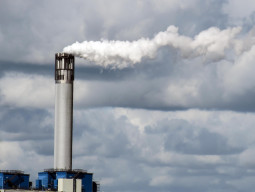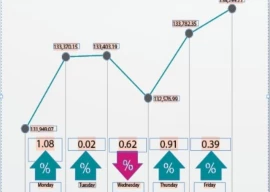
The previous Pakistan Muslim League-Nawaz (PML-N) government, in a bid to tackle any energy crisis in future, had merged petroleum and power ministries to form the energy ministry. However, the recent acute gas shortages show a lack of coordinated planning and information-sharing between key stakeholders like the Petroleum Division, Power Division and Oil Companies Advisory Council (OCAC), which looks after the interest of refineries and oil marketing companies.
Oil mafia is very powerful in the country. Everyone knows that electricity demand goes down in winter but a huge volume of furnace oil has been imported this season, which has led to piling up of furnace oil stocks produced by domestic refineries.
Even the Cabinet Committee on Energy was surprised over the import of furnace oil despite the country having huge stocks and oil refineries nearing shutdown. At present, the refineries produce around 10,000 tons of furnace oil per month. They can continue running their plants as long as furnace oil is consumed.
According to data available on OCAC’s website, 282,512 tons of furnace oil was imported during the period July-November 2018. This has raised the question as to who was behind the decision to import such a huge volume at the beginning of winter, when consumption goes down substantially.
The previous PML-N government had replaced furnace oil with liquefied natural gas (LNG) but the second LNG terminal is running at half the capacity and at the same time furnace oil is being imported in huge quantities.
Furnace oil-based electricity costs Rs13 per unit compared to the cost of Rs9 per unit for LNG-based electricity. LNG consumption should be given preference as per the merit order in order to avoid burdening consumers with an additional cost of billions of rupees.
At present, Pakistan’s storages have 560,000 tons of furnace oil and over 800,000 tons of storage capacity of independent power producers (IPPs) has remained unutilised.
Oil producers suggest that the government should allow import of furnace oil in summer season only. This, however, requires better planning, coordination and information-sharing among key stakeholders including the Petroleum Division, Power Division and OCAC. It had been decided after last year’s crisis and should be followed now to avoid the repeat of crippling shortages.
Experts are of the view that the government should establish a mechanism with input from each energy mix component and share it regularly. In this age of software solutions, such models are not hard to develop and with information-sharing, pitfalls can be avoided.
Export proposal
Following the recent energy crisis, the Cabinet Committee on Energy decided to explore the option of exporting furnace oil. However, oil producers argue that furnace oil exports are not financially viable as necessary infrastructure is not in place and specific policy is also missing. Exports mean the disposal of furnace oil at “distressed” prices as well as additional cost of exports, especially for upcountry refineries.
Moreover, the world market has no demand for furnace oil and in a majority of countries refineries have stopped producing furnace oil and are churning out gasoline and high-speed diesel.
The only viable option is the conversion of locally produced furnace oil into higher-value products such as gasoline and middle distillates. These conversion facilities will, however, require a minimum of two to three years before starting production and one plant will cost around $500 million.
So, the refineries can be given a time frame and till such time, the government can make local furnace oil a ‘must-consume’ product in the energy mix. If this is not done, the supply of other products could be disrupted.
Revising energy mix
With the changing energy mix, LNG, coal and renewables compete with furnace oil in power generation. This has piled on the pressure on local refineries.
When a refinery operates, it produces all petroleum products including furnace oil. If a refinery’s furnace oil tanks are filled to capacity, it causes reduction in its overall output and eventually the plant shuts down.
Pakistan’s refineries meet 30% of gasoline demand and 50% of high-speed diesel need of consumers.
Based on annual gross domestic product (GDP) growth of 5%, the annual demand for petroleum products is forecast to reach 50 million tons in 2030 due to impact of the China-Pakistan Economic Corridor (CPEC) on diesel demand compared to estimated demand for 29.6 million tons in 2018.
In 2029-30, motor gasoline and diesel deficits will grow to 14 million tons and 16 million tons per annum respectively from current deficits of 5 million tons and 4 million tons respectively. This comes even after accounting for volumes of the planned Parco Coastal Refinery, which is expected to come on stream by 2023-24.
More state-of-the-art deep-conversion refineries of 300,000 barrels per day each with capacity to maximise 95 RON motor gasoline and diesel production and both products meeting minimum Euro IV/V specifications will reduce the deficit to 3 million tons per annum by 2030.
A deep-conversion refinery produces only 2-3% of furnace oil depending on the design and crude diet. Since crude for these refineries will be brought through their own Single Point Mooring (SPM) facilities, it will reduce the pressure on ports, which are already finding it tough to handle huge petroleum product imports.
Environment-friendly
A Pakistan-focused study should be undertaken to define future plan of action in a bid to switch from Euro-II to higher environmental standards. The study should assess economic, foreign exchange, import infrastructure and strategic implications for Pakistan and assess the timing for refinery and infrastructure upgrades.
Finally, let us also have a revised downstream petroleum policy which not only brings changes to address present and future challenges. The last policy for this sector was announced way back in 1997 and it has become outdated.
The writer is a staff correspondent
Published in The Express Tribune, December 24th, 2018.
Like Business on Facebook, follow @TribuneBiz on Twitter to stay informed and join in the conversation.


















COMMENTS
Comments are moderated and generally will be posted if they are on-topic and not abusive.
For more information, please see our Comments FAQ